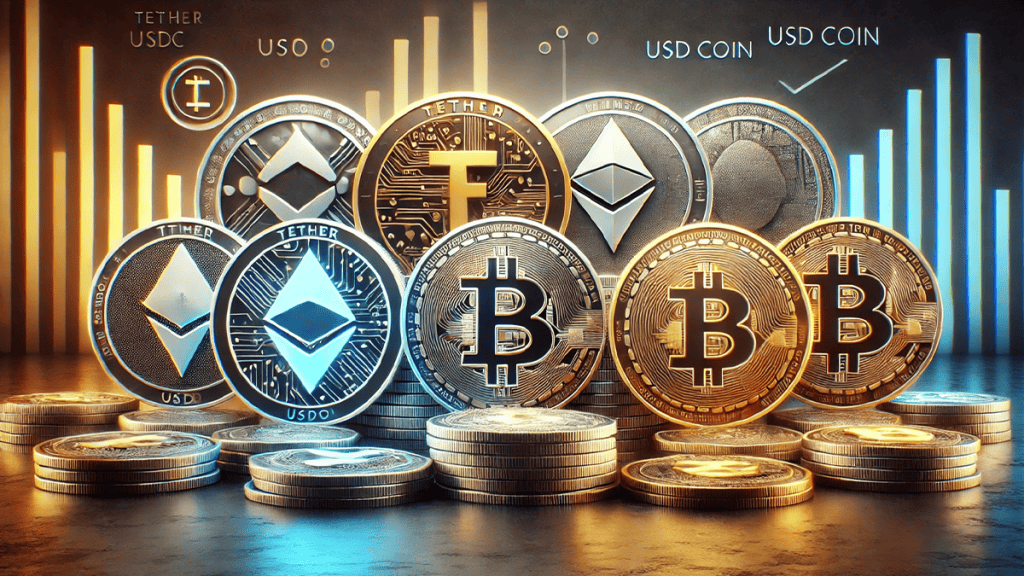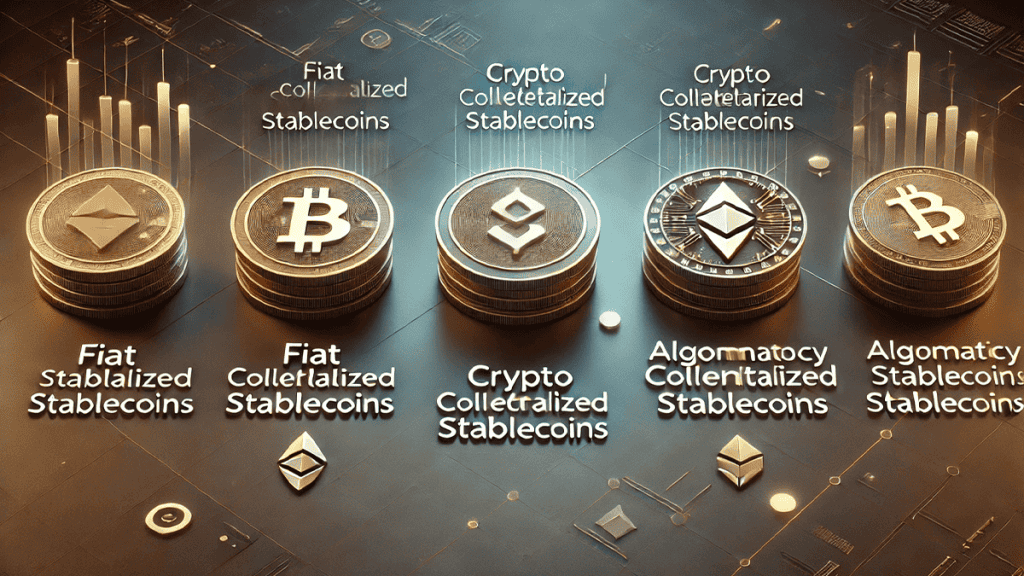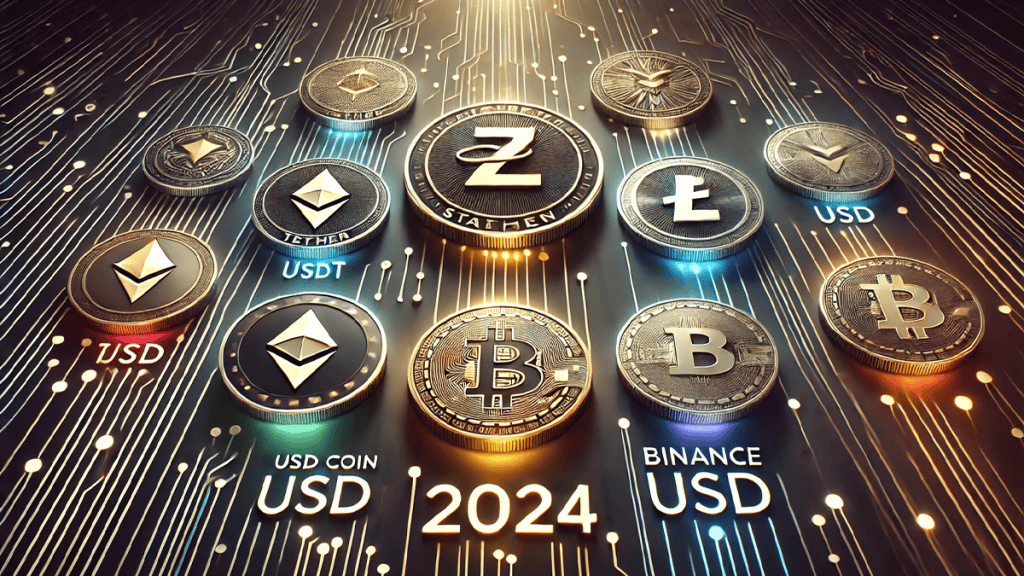
In the dynamic world of cryptocurrencies, stablecoins have emerged as pivotal elements. They offer a bridge between the volatile crypto market and the stability of traditional currencies. These digital assets are designed to maintain a stable value by pegging themselves to a reserve asset, such as a fiat currency like the U.S. dollar or a commodity like gold. This blog post provides a detailed review of these assets, focusing on their origins, advantages and disadvantages, and their overall impact on the cryptocurrency landscape.
Stablecoins represent a crucial segment of the cryptocurrency market, offering diverse functionalities and use cases. They are pivotal in facilitating everyday transactions and serving as a stable store of value, thus becoming integral to the digital finance ecosystem. As of June 2024, understanding the intricacies of these digital assets is essential for anyone involved in or considering entering the crypto space.
This comprehensive review delves into the historical context of stablecoins. Firstly, it compares their various strengths and weaknesses. Subsequently, the discussion highlights their importance in today’s financial ecosystem. By the end of this post, you will have a clearer understanding of what these assets are, how they differ from other cryptocurrencies, and why they matter in the grand scheme of digital currencies.
Background of Stablecoins
Developers introduced stablecoins to mitigate the high volatility typically associated with cryptocurrencies like Bitcoin. They provide the best of both worlds: the security and transparency of blockchain technology and the stability of traditional financial assets.
Types of Stablecoins

These assets can be broadly categorized into three types based on their underlying assets:
- Fiat-Collateralized Stablecoins: These coins have a reserve of fiat currencies like the U.S. dollar backing them. Examples include Tether (USDT) and USD Coin (USDC).
- Crypto-Collateralized Stablecoins: These coins have a reserve of other cryptocurrencies backing them. An example is DAI, which pegs to the U.S. dollar but has Ethereum and other cryptocurrencies backing it.
- Algorithmic Stablecoins: These coins are not backed by any reserve but use algorithms to control the supply and maintain the peg. Examples include TerraUSD (UST) before its collapse.
Stablecoins have gained prominence due to their ability to offer a stable medium of exchange and a reliable store of value, which are essential features for both everyday transactions and large-scale financial operations.
Pros and Cons
Stablecoins offer a variety of strengths that make them attractive to different types of users and investors. Here are some of the primary advantages:
- Stability: By being pegged to stable assets like fiat currencies, stablecoins offer price stability, making them suitable for everyday transactions and as a store of value.
- Liquidity: Stablecoins provide high liquidity, making it easy for users to convert their assets into fiat currencies or other cryptocurrencies without significant price changes.
- Accessibility: They can be accessed by anyone with an internet connection, promoting financial inclusion by providing banking services to the unbanked and underbanked populations.
Despite these strengths, stablecoins also have their disadvantages:
- Centralization Risks: Fiat-collateralized assets often face criticism for being centralized, as they rely on a central authority to manage the reserve assets.
- Regulatory Risks: Stablecoins face regulatory scrutiny from governments worldwide, which can impact their adoption and usage.
- Collateralization Issues: Crypto-collateralized and algorithmic coins can face issues related to maintaining their peg, especially during periods of extreme market volatility.
For a deeper understanding of this topic, check out the video below
| Stablecoin | Strengths | Weaknesses |
|---|---|---|
| USDT | High liquidity, widely accepted | Centralization concerns, regulatory issues |
| USDC | Transparency, regulatory compliance | Centralization concerns |
| DAI | Decentralized, backed by smart contracts | Peg maintenance during market volatility |
| BUSD | Regulated, secure | Centralization concerns, regulatory issues |
Impact on the Cryptocurrency Market
Stablecoins play a crucial role in the broader cryptocurrency ecosystem. Firstly, they contribute to the market’s stability. Secondly, they provide a reliable medium of exchange. The development of these assets has led to several significant impacts.
- Facilitation of Transactions: These assets facilitate seamless transactions within the cryptocurrency ecosystem by providing a stable medium of exchange. This feature is particularly useful for trading on cryptocurrency exchanges.
- DeFi Integration: These assets facilitate seamless transactions within the cryptocurrency ecosystem by providing a stable medium of exchange. This feature is particularly useful for trading on cryptocurrency exchanges.
- Cross-Border Payments: They enable fast and low-cost cross-border payments, making them a preferred choice for remittances and international transactions.
The importance of stablecoins is also evident in their market capitalization. Stablecoins like USDT and USDC are among the top cryptocurrencies by market cap, indicating widespread usage and acceptance. This growing prominence underscores the need to understand and evaluate these assets critically.
Leading Stablecoins in 2024

The landscape of stablecoins is constantly evolving, with several standout performers in 2024:
Tether (USDT)
Tether is the most widely used stablecoin, backed by fiat reserves to maintain its peg to the U.S. dollar. It is widely used for trading and transactions across various cryptocurrency exchanges.
USD Coin (USDC)
USD Coin is a fiat-collateralized stablecoin managed by the Centre consortium, including Circle and Coinbase. It offers transparency and regulatory compliance, making it a trusted choice for institutional and retail users.
DAI
DAI is a decentralized, crypto-collateralized stablecoin managed by the MakerDAO protocol. It is backed by Ethereum and other cryptocurrencies and aims to maintain a 1:1 peg with the U.S. dollar through smart contracts.
Binance USD (BUSD)
Binance USD is a fiat-collateralized stablecoin issued by Binance in partnership with Paxos. It is regulated and approved by the New York State Department of Financial Services (NYDFS), ensuring its reliability and compliance.
Conclusion
These assets offer numerous opportunities and challenges for investors, developers, and users alike. As we’ve explored, they provide stability and reliability in the cryptocurrency market. They also come with their own set of risks and uncertainties.
Understanding the strengths and weaknesses of stablecoins is essential for making informed decisions in the cryptocurrency space. While some stablecoins offer price stability and liquidity, others may face significant regulatory and collateralization challenges. The impact of stablecoins on the broader financial ecosystem is profound, facilitating seamless transactions, enabling DeFi platforms, and promoting financial inclusion.
As the cryptocurrency market continues to evolve, stablecoins will likely play an increasingly important role. Staying informed about these developments and critically assessing each stablecoin’s unique attributes will be crucial for anyone looking to navigate this dynamic landscape.
Key Points
- It is a cryptocurrencies designed to maintain a stable value by pegging to reserve assets like fiat currencies or commodities.
- They provide stability in the crypto market, facilitating transactions and serving as a reliable store of value.
- They include fiat-collateralized, crypto-collateralized, and algorithmic stablecoins.
- They can face centralization, regulatory, and collateralization challenges.
- Research thoroughly, use reputable platforms, and consider the stablecoin’s stability and regulatory compliance.
Reference
- Investopedia. Stablecoin.
- CoinDesk. What is a Stablecoin?
- Coinbase. What is a Stablecoin?
- CoinDesk. What is a Stablecoin?
